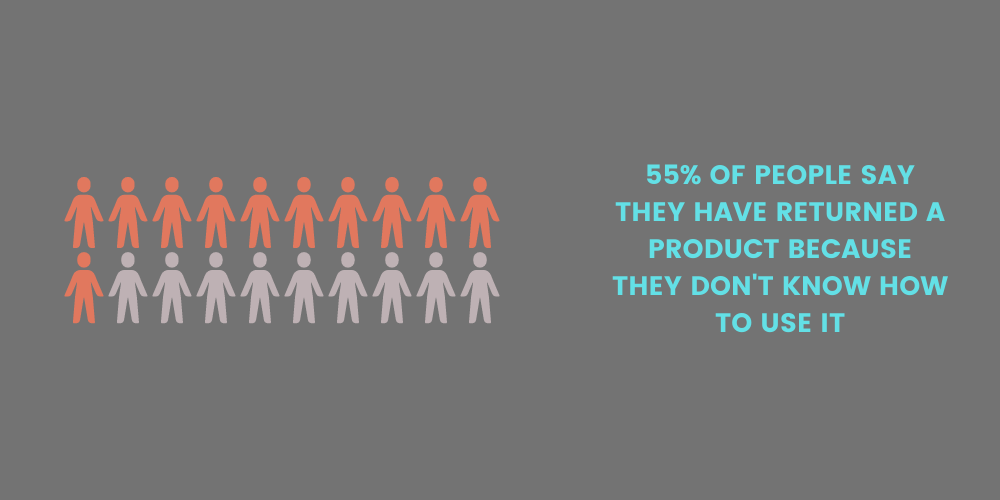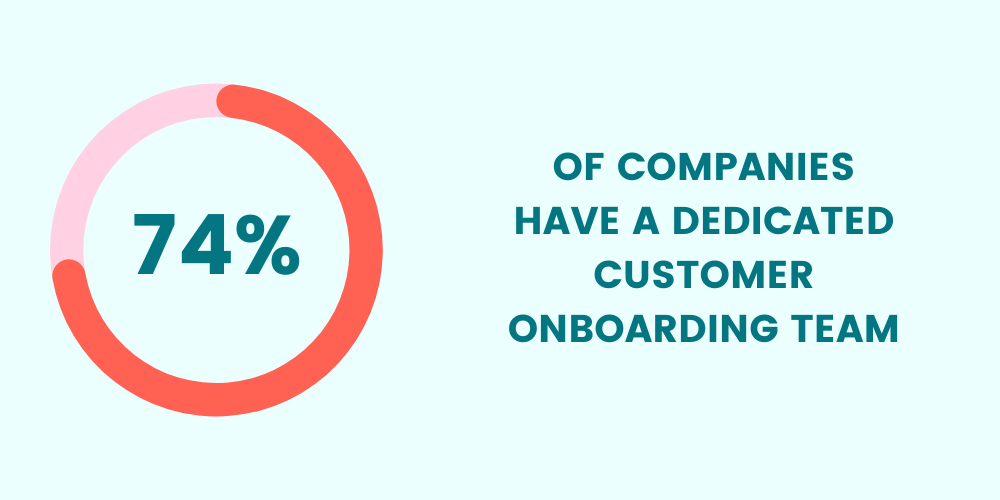SaaS vendors are seeing a significant year-on-year increase in market demand for their services and a definite trend in migration towards subscription-based pricing models. Combined with these two factors, the journey taken alongside the customer no longer ends with an expired warranty.
Month on month, year on year, consumers reach renewal points like blood in the water to SaaS competitors, making customer retention constantly strive for clued-in providers.
Early on in the customer relationship, companies have an opportunity to embed their SaaS user firmly in their product culture with smooth, effective onboarding. Yet, a notably-high portion of SaaS vendors is missing the mark. It’s time to ask why this is the case and what can be done about it.
What is Customer Onboarding and Why is it Important?
Imagine you sell toasters. Your customer is reasonably affluent and has the budget for a decent toaster. However, a couple of weeks later, they realize it’s not for them. It’s too complicated, and they just don’t seem to be able to get the best out of it as promised. Worst case scenario, they return for a refund, but they may just decide to throw it away and get a new one. Toast is important to them. As it should be.
Now imagine that toast was so important to them that they were willing to pay you every month for some seriously superior toast; you’re the world’s first purveyor of toast-based subscription services, after all. Suddenly, you’ve lost months, years, and potentially decades of revenue. All this is because you failed to have one or two simple conversations with the customer about how to best use your product.
Everything from ale delivery services to toll-free number services is moving into a subscription-based pricing model, so ensuring customer retention has never been more vital as far as continuing revenue is concerned.
While a sales pitch aims to get the product into the customer’s hands and avoid inventory aging, a solid customer onboarding journey to follow that up guarantees that they will be able to fully utilize the product to achieve success the way you believe it will. You know your product inside out, and it’s up to you to get your customer to where they need to be to see a return on investment as quickly as possible.

Image Sourced from wyzowl.com
Onboarding allows you to initiate your customer into the fan cult by letting them witness the miracles themselves under your watch. The means by which you engage your customers and educate and retain them through your product lifetime all begin within customer onboarding.
SaaS products exist in a marketplace where 90% of customers feel like companies could do better with their onboarding strategies. Creating one that is head and shoulders above your SaaS competitors is the perfect chance to shine.
Onboarding as a means of customer retention is also highly cost-effective; it can cost significantly more to get back out there and acquire a new customer than to retain a current one simply.
So, Where to Start?
The first goal of your customer onboarding strategy should be to demonstrate the efficiency with which your product solves its particular problem. This is time critical; SaaS customer onboarding should be the quickest way by which you can demonstrate the value of your product. This will, in turn, help customers envision the long, productive journey they will be taking with you.
Between signup and that value recognition ‘epiphany’ is the dastardly peak period for churn, so doing everything you can to narrow that window is vital. Churn, a metric for customer loss over a specific period of time, should be a massive concern for SaaS businesses.
This is particularly true as the market moves towards subscription-based SaaS solutions where revenue realization can, potentially, extend indefinitely. The SaaS business model sees its revenue come in over an extended period of time compared to other one-and-done sales models. For that reason, important SaaS metrics can’t be overlooked.
How SaaS onboarding is carried out can vary wildly, and choosing the suitable method is key to easing the customer into your SaaS product experience. Here, the complexity of your product will factor heavily in the decision-making process if the full feature set can be broken down into a short, memorable demo video.
Video is the preferred method of navigating a new product or service for 65% of people. Such an onboarding method will only require updating or maintenance should your product features change or evolve.

Image Sourced from wyzowl.com
Further, a lot of onboarding can be done from within the user interface. The presence of tooltips for specific application segments can more easily allow users to navigate and intuit further stages of their product use. They can also highlight features that might have been given secondary consideration in the UX journey and expose broader features ad hoc.
A built-in, novel way to entrench your customer in your product experience is by gamification of their initial few journeys into your SaaS product. Points-based rewards, percentage completion on initial setup, and interactive checklists offer a sense of achievement.
However, say you have a customer leveling up their communication infrastructure by adding a virtual voicemail app, for example. The multi-level, cross-channel benefits of SaaS-integrated solutions such as these require more involved onboarding and detailed knowledge of a specific customer’s needs to demonstrate rapid value return and quickly avoid churn.
Considerations come into play here, such as on-site assistance with a go-live and an onboarding representative presence as the system continues into its first period of use. The customer is beginning a new chapter in their business and having someone who can help them fully utilize their product will inspire confidence and obliterate buyer’s remorse. Where this isn’t possible, a daily dialogue using VoIP and landline can work wonders for post-sales confidence.

Image Sourced from precursive.com
No matter how much you tailor your onboarding toward specific customer needs, the rule will always be an exception. One user in a client group with significant pull is enough to derail your customer feedback score and cause a company-wide onboarding stall.
This is where it’s vital to keep lines of communication open for any rogue queries or unforeseen detours off the learning path. Customer service teams remain vital in the post-sale process just as they would without parallel onboarding.
Maintaining the relationships forged with customers before onboarding is vital in fostering community and collaboration as they quickly start to see the value of your product in use.
Ok, I Have my Strategy; What Next?
The importance of continuous feedback cannot be overstated when it comes to refining a SaaS onboarding strategy. Touching base with your customer and proactively measuring your success should be an integral part of the process.
No one who has done any business in the last few years needs to be told how fast the landscape can change. Not only do customers’ needs change, but how they engage with products and services can turn on a knife edge.
In a world where domain name cost is more of a business consideration than scrolling for physical premises, SaaS product integrations and solutions are the hot adoptions for most businesses.

Image Sourced from superoffice.com
Building key insights from customer conversations into future onboarding strategies can allow for shorter turnarounds in the initial kick-off phases. This will, in turn, allow you to spend more time on tailoring, rather than creating, strategies to meet customer needs to the letter.
Effective meeting management can and will level this up for you. It will allow you to capture insights and course correct any behaviors on the customer journey that might not fully gear your business or the customer up for success.
Building a reputation with your onboarding strategy will also bode well for future interactions. Nearly two thirds of customers consider available onboarding support to be a key factor in whether or not they adopt a particular solution in the first place. Having that street cred from the outset is its reward.
Once you have established yourself as a market contender–imagine being one of the providers of a multi location inventory management tool–the invaluable relationships you’ve built with your customers can also lead to further revenue streams. Establishing a referral program is just one of the ways you can see a return on investment on market-leading SaaS onboarding.
In Conclusion, It’s Pretty Important, Right?
You could say that, yes. The importance of tailored, product- and customer-aware onboarding is vital in guiding your customer to their first ‘A-ha!’ moment as quickly as possible and making them a fan for life. But with rapid changes and growth in the SaaS market and a boom in adoption and integration, refining and evolving your onboarding to stay relevant is just as vital.
Onboarding affords you low-cost opportunities to stay with your customer long after the sale in a way that insulates them from competitor poaching and churns.
You know your product inside out, back to front, and upside down. A good onboarding strategy isn’t simply a means to pass on that knowledge but to create product evangelists in a market that is quickly becoming crowded with alternative solutions.



